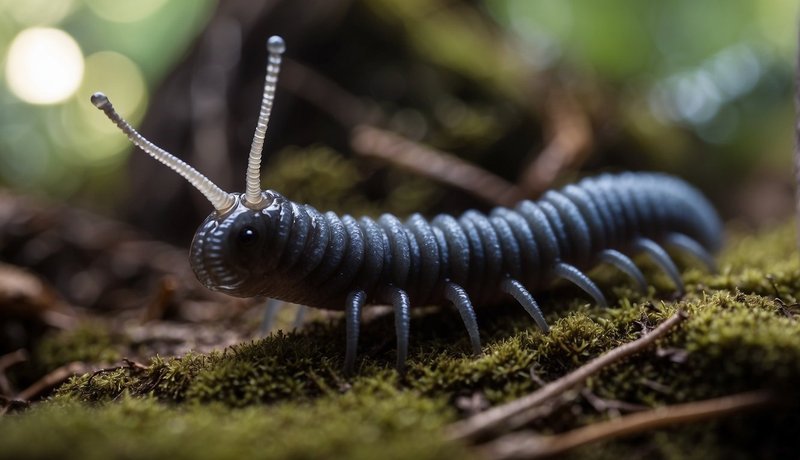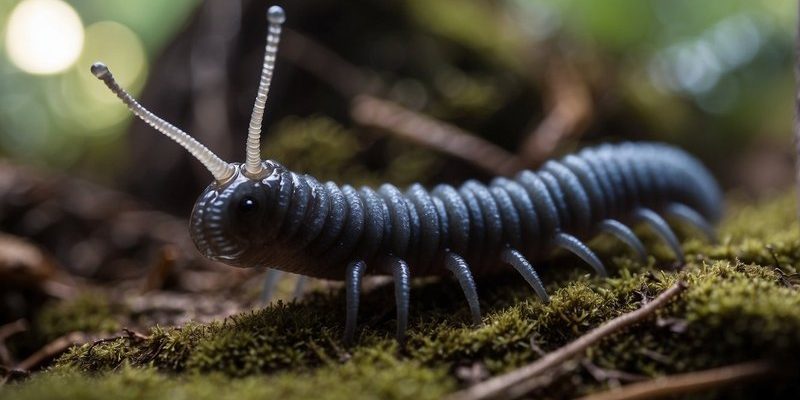
Imagine a tiny, furry predator with a remarkable method of capturing its meals. Velvet worms possess an arsenal of sticky slime that they use to immobilize their prey. When you see these captivating moments in nature documentaries, it’s not just about the visuals; it’s about understanding these astonishing organisms and their role in their ecosystems. Let me explain why velvet worms are not just another background character in the grand story of nature but fascinating creatures deserving of our attention.
What Are Velvet Worms?
Velvet worms, also known as *Onychophora*, are part of a unique group of creatures that have been around for over 500 million years. With their soft bodies covered in tiny, velvety bristles, these fascinating invertebrates often find themselves in the leaf litter of tropical and subtropical forests. Their appearance might remind you of a strange blend of a caterpillar and a slug, but they are actually more closely related to arthropods, which include insects and crustaceans.
These creatures can grow anywhere from just a few centimeters to over 20 centimeters in length, and they come in various colors, ranging from browns and greens to bright blues and yellows. What’s truly striking about velvet worms is their unique way of moving. They travel in a slow, caterpillar-like motion, using their many pairs of stubby legs to glide along the forest floor. This means you often have to be patient and observant during nature documentaries to catch a glimpse of them in action.
You might be wondering why these worms are so special. Well, their hunting technique is one of nature’s little wonders. Contrary to what you might expect from a creature that moves this slowly, velvet worms can be surprisingly quick when striking. They can shoot a sticky slime at their prey, effectively immobilizing it, and then they follow up with a quick bite. It’s like watching a live-action game of “catch and conquer.”
The Hunting Method of Velvet Worms
Now let’s get into how velvet worms hunt. If you think of them as tiny ninjas of the forest floor, you wouldn’t be far off. Their primary method involves a unique secretion they produce from glands located in their heads. This isn’t just any old slime; it’s a specially designed adhesive that helps them catch and hold on to their prey—often small insects, such as crickets or spiders.
When a velvet worm spots potential food, it can sense vibrations and movement around it. It slowly creeps closer, often camouflaging itself to avoid detection. Once in range, it can shoot a stream of slime up to a meter away, effectively capturing its unsuspecting victim. The slime not only immobilizes the prey but also begins to digest it, allowing the velvet worm to feast on its meal without much effort.
This hunting strategy is a marvel of evolution. You could compare it to a spider’s web but in a more direct and aggressive manner. Instead of waiting for prey to come to them, velvet worms take an active approach, combining elements of stealth and rapid action. It’s like they’re saying, “Why wait around when I can go out and get my dinner?”
Where to Find Velvet Worms in Nature Documentaries
When it comes to nature documentaries, velvet worms often appear in segments focused on tropical rainforests or rich ecosystems. These settings provide a lush environment where these creatures thrive, surrounded by the vibrant flora and fauna that characterizes their habitats. Nature filmmakers often film in regions like New Zealand, Central America, and parts of Australia, where velvet worms are abundant.
In documentaries, you might see them featured during segments that explore the dynamics of predator and prey. The slower-paced, methodical movements of velvet worms contrast sharply with the rapid, frantic motions of their prey, making for captivating viewing. Filmmakers often utilize macro lenses to capture the fine details of these creatures, allowing viewers to appreciate their beauty and complexity.
What adds to the magic of these documentaries is the narrative around the velvet worms’ role in their ecosystem. They are not just hunters; they are also vital players in maintaining the balance of their environment. By consuming various insects, they help control populations and serve as food for other animals, weaving a complex web of life that’s crucial to the health of their habitats.
The Importance of Velvet Worms in Ecosystems
You might not think much about velvet worms in your day-to-day life, but they play an essential role in their ecosystems. As predators, they help keep the insect population in check. This is crucial because unchecked insect populations can lead to problems like plant overconsumption or the spread of disease.
Additionally, velvet worms contribute to the nutrient cycle. As they hunt and digest their prey, they return nutrients to the soil, which helps promote plant growth. This interconnectedness means that even a small creature like the velvet worm has a significant impact on its environment. It’s a reminder that every creature, no matter how small, plays a part in the greater ecological picture.
Filmmakers highlight this role in documentaries by not only showcasing their hunting techniques but also explaining their interactions within the ecosystem. It’s fascinating to see how one creature can influence a whole community. It’s a beautiful illustration of nature’s balance and the intricate dance of life that occurs every single day, often unnoticed.
The Fascination Behind Velvet Worms
So, what is it about velvet worms that captivates both scientists and nature enthusiasts? It could be their unusual appearance, their unique hunting techniques, or simply their ancient lineage. These creatures have existed alongside dinosaurs, yet they have hardly changed over millions of years. This stability and resilience are intriguing.
Viewers are often drawn in by the sheer oddity of velvet worms, and documentaries do a great job celebrating that. Sorry, cute kittens! Sometimes, the quirkiest animals steal the show. With the rise of high-quality filming techniques and a growing interest in biodiversity, filmmakers are shining a spotlight on these lesser-known creatures.
Moreover, the emotional connection viewers feel towards these animals can’t be overstated. Watching a velvet worm catch its food can evoke a visceral reaction, as you root for the creature both out of fascination and respect for its skills. It’s a reminder of how rich and diverse life is on our planet—a call to appreciate the wonders that often go unnoticed.
Behind the Scenes: Filming Velvet Worms
Filming velvet worms isn’t as straightforward as you might think. Nature filmmakers face challenges like low light levels in their habitats and the need for perfect timing to capture the worms in action. They often spend long hours in the field, waiting for the right moment to hit “record.” Using macro cameras allows them to get up close and personal with these tiny hunters, but it requires a great deal of patience.
During the production process, filmmakers pay special attention to the conditions in which they film. Velvet worms are sensitive to their environments, so capturing their behavior without disturbing them is crucial. This practice not only makes for better footage but also respects the creatures and their habitats.
What’s fascinating is how the art of filmmaking can inspire a sense of awe and curiosity. When viewers finally see these velvet worms in their natural habitats, it makes them appreciate the complex ecosystems we have on Earth. It’s not just about showcasing the action; it’s about storytelling and connecting people with nature in ways they may have never expected.
Velvet worms may not be the first animals that come to mind when you think of nature documentaries, but they definitely deserve a spotlight. Their unique hunting methods, ecological importance, and the sheer oddity of their appearance make them captivating subjects for filmmakers and viewers alike. Each documentary segment not only entertains but educates, opening up a world that many people have never considered.
As we explore the natural world through these lenses, we uncover the hidden wonders that lie beneath the surface. Velvet worms remind us that there’s so much more than meets the eye in our ecosystems. So, the next time you’re watching a documentary and catch a glimpse of these extraordinary creatures, take a moment to appreciate the role they play in our world and the beauty of diversity that surrounds us.

